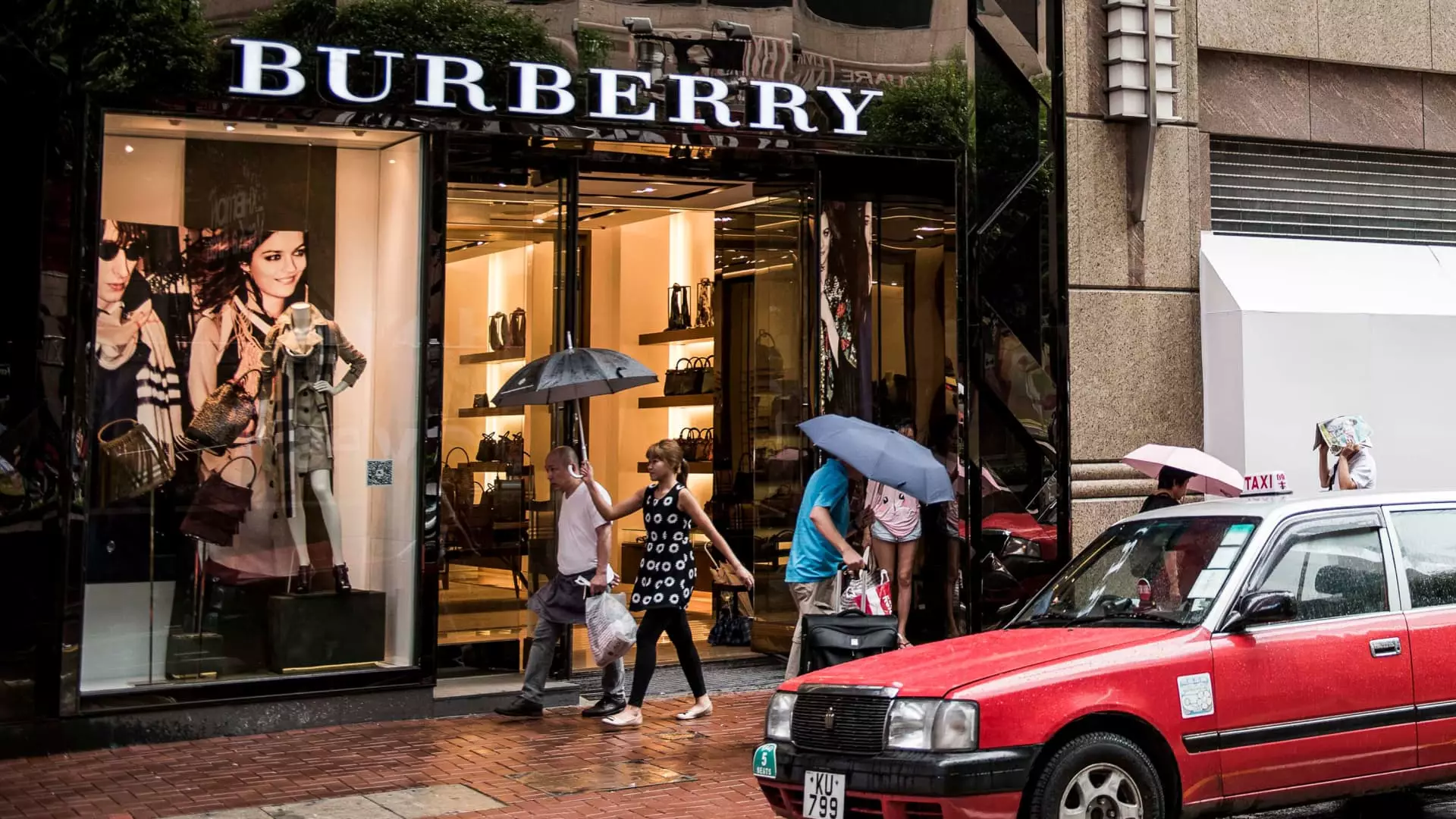Burberry, a renowned British luxury brand with a history spanning over a century, recently faced a major setback in the market. The company witnessed a sharp decline of over 15% in its shares following a disappointing first-quarter performance. This led Burberry to issue a profit warning, replace its CEO, and suspend its dividend payments. The sudden departure of CEO Jonathan Akeroyd and the appointment of Joshua Schulman, a former executive from Michael Kors and Coach, has raised eyebrows in the industry. The drastic measures taken by Burberry indicate a sense of urgency to address the underlying issues affecting its financial health.
Burberry’s struggles can be attributed to a combination of factors affecting the luxury retail sector. The company reported a significant drop in comparable store sales, with sales declining across all major regions including Europe, Asia Pacific, and the Americas. The macroeconomic uncertainty in key markets has led to a slowdown in luxury demand, further compounded by the impact of a cost-of-living crisis in Europe and the U.S., and economic concerns in Asia. RBC analysts expressed concern over Burberry’s brand momentum and emphasized the need for immediate action to prevent further market share losses.
In response to the challenging market conditions, Burberry unveiled a series of strategic initiatives aimed at revitalizing its brand and positioning itself for long-term growth. The company emphasized its commitment to reconnecting with its core customer base by offering a broader range of everyday luxury products. Additionally, Burberry plans to refine its brand communication, revamp its online presence, and implement cost-saving measures to improve its financial performance in the second half of the year. These efforts reflect Burberry’s determination to adapt to changing consumer preferences and strengthen its competitive position in the luxury market.
Known for its iconic trench coats, bags, and signature “Burberry check,” the brand has undergone a transformation in recent years to appeal to a more upscale clientele. Former CEO Marco Gobbetti initiated a five-year turnaround plan in 2017, focusing on elevating Burberry’s brand image and product offerings. Akeroyd, Gobbetti’s successor, continued this trajectory by emphasizing the importance of innovation and brand differentiation. The recent leadership changes at Burberry signal a renewed effort to navigate the challenges posed by a shifting global economy and evolving consumer preferences.
Burberry’s recent financial struggles highlight the complexities of operating in the luxury retail sector. The company’s response to the market challenges, including leadership changes and strategic realignment, underscores its commitment to weathering the storm and emerging stronger on the other side. As Burberry navigates the turbulent waters of the luxury market, its ability to adapt to changing circumstances and capitalize on emerging opportunities will ultimately determine its long-term success.

